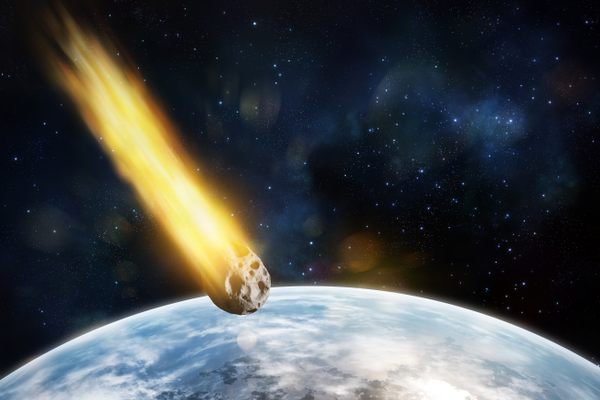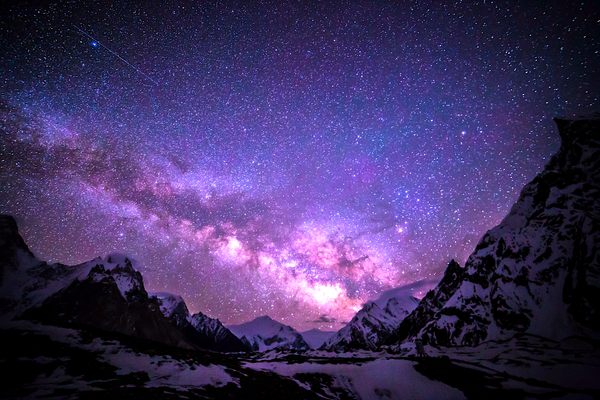The Perseid Meteor Shower Is Summer’s Best Show
Here’s what you need to know about witnessing the annual August event, when Earth passes through a comet’s castoffs.
Atlas Obscura’s Wondersky columnist Rebecca Boyle is an award-winning science journalist and author of the upcoming Our Moon: How Earth’s Celestial Companion Transformed the Planet, Guided Evolution, and Made Us Who We Are (January 2024, Random House). Throughout the summer, she’ll be sharing the stories and secrets of our wondrous night sky.
When you wake up tomorrow, whether you rise with the sun or long after it, think for a moment about our journey through the cosmos.
The sun has not technically risen. Instead, the location of your bed has merely spun around, at roughly 1,000 miles an hour, to face the violent nuclear furnace of our star. Your bed sits on a floor, likely inside a building, on the surface of a hot rock coated in a vanishingly thin layer of breath. You, your bed, everything around you, and that layer of atmosphere are all hurtling through space at 67,000 miles per hour (18.5 miles per second). As a group, Earth, the other planets, and the sun are circling the center of the Milky Way at 504,000 miles per hour (140 miles per second).
Good morning! Do you still need some coffee?
This weekend, you can experience what this raging-fast motion through space looks like. The middle of August heralds Earth’s most spectacular meteor shower, the Perseids.

The Perseids are one of two major and regularly occurring annual meteor showers (the other is December’s Geminids). Stargazers in the Northern Hemisphere love seeing the Perseids in balmy August, versus in the chill of winter. They are named for the constellation Perseus, where they appear to originate, but you can see them from anywhere and they can come from any direction.
The meteors are really bits of debris from Comet Swift-Tuttle, which last visited Earth’s neighborhood in 1992. When comets approach the sun, the ice within them melts and turns to vapor, releasing bits of rock and other particles that create a dusty trail behind the comet’s nucleus. After the comet leaves Earth’s vicinity and returns to the outer solar system, some of that material is left behind. Every year, meteors seem to streak across the sky because Earth’s path around the sun carries our planet through this cloud of remaining debris. As we zoom through the cloud at 18.5 miles per second, some comet crumbs and dust grains fall through our atmosphere, rapidly disintegrating.
Some Perseids have been visible for a few weeks now—I saw a couple in late July, and NASA has been tracking an uptick in fireballs since July 26—but activity peaks Aug. 11-13, with the pinnacle coming overnight Aug. 12 into the wee hours of Aug. 13. This year’s show will be spectacular, mostly because the Moon will not be in the way. A waning crescent, the Moon will rise just before dawn, reaching its new Moon phase Aug. 16. In very dark locations, where there is neither moonlight nor artificial city lights, people may see up to 90 Perseids an hour. NASA says you can expect about 40 an hour if you get outside cities and dense suburbs. “That’s about one every couple of minutes, which is not bad,” Bill Cooke, who leads NASA’s Meteoroid Environment Office, said in a NASA blog post.

The meteors often flash white, orange, green, pink, and purple. The metal content of a comet or asteroid determines the color you’ll see as it breaks up; the Perseids often contain iron, nickel, magnesium, and calcium.
Meteors and their associated stones, meteorites, were beloved—and sometimes feared as bad omens—for millennia before scientists figured out what they were. Greek astronomers knew they came from above Earth, and tried to understand this realm; we still call the study of Earth’s weather systems, its atmospheric phenomena, “meteorology.”
We know now that meteors are not omens of doom, but the Perseid meteors’ parent—the comet itself—could, in the very distant future, pose a threat. At 16 miles across, it is by far the largest object to repeatedly cross Earth’s orbit. What’s more, it moves quickly—comets generally orbit the sun at much faster speeds than their celestial brethren, asteroids—so a direct hit would be a civilization-ending calamity. Swift-Tuttle is 260 percent larger than whatever comet or asteroid walloped Earth 65 million years ago, wiping out the dinosaurs and most other life. But astronomers say the Perseids’ parent comet won’t impact us for at least the next 2,250 years, beyond which it’s harder to predict.
So for now, and for the next several generations of humans, we should all just go out and enjoy its leftover crumbs, streaking across the nighttime sky, in one of stargazing’s greatest summertime shows.
Is there something you’d like to know about our brilliant night sky? Share your stargazing questions with us and you may see them answered in a future Wondersky column!











Follow us on Twitter to get the latest on the world's hidden wonders.
Like us on Facebook to get the latest on the world's hidden wonders.
Follow us on Twitter Like us on Facebook